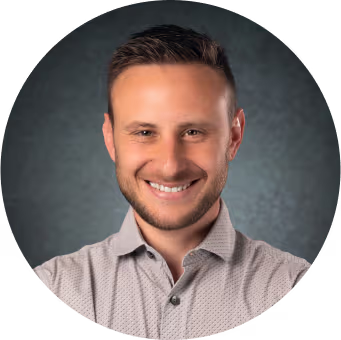Addiction Recovery - Drug and Alcohol
Schedule 1 Drugs and Addiction: Why

Discover the dangers of Schedule 1 drugs, their impact on addiction, and how recovery is possible. Learn how treatment can help you or a loved one break free.
What qualifies a substance as a Schedule 1 drug?
A substance is classified as Schedule 1 if it has a high potential for abuse, no currently accepted medical use in the U.S., and lacks recognized safety for medical supervision. These factors make medical or recreational use illegal at the federal level.
Is marijuana considered a Schedule 1 drug?
Yes, under federal law, marijuana is classified as a Schedule 1 drug. However, many states have legalized it for medical or recreational use, creating a legal conflict between state and federal regulations. Ongoing research and policy discussions continue to challenge this classification.
Can addiction to Schedule 1 drugs be treated successfully?
Yes, addiction to Schedule 1 drugs can be treated with a combination of medically supervised detox, therapy, and long-term support. Treatment centers, such as The Edge Treatment Center, offer personalized recovery programs to help individuals overcome addiction and maintain lasting sobriety.
Are there any medical uses for Schedule 1 drugs?
By definition, Schedule 1 drugs have no accepted medical use in the U.S. However, research on substances like marijuana, psilocybin, and MDMA suggests potential therapeutic benefits, leading to policy debates and changes in state-level laws regarding their medical applications.
How can I support a loved one struggling with addiction to a Schedule 1 drug?
Encourage them to seek professional treatment, provide emotional support, and avoid enabling behaviors. Connecting them with experienced professionals at treatment centers like The Edge Treatment Center can help them access the care they need to begin their recovery journey.
Struggling with addiction can feel overwhelming, especially when dealing with substances classified as Schedule 1 drugs. These drugs, including heroin, LSD, and MDMA, are considered highly addictive with no approved medical use.
If you or someone you love is caught in the cycle of substance abuse, know that recovery is possible. Addiction isn’t a choice, but seeking help is. At The Edge Treatment Center, we provide personalized care to help individuals regain control and build a healthier future. Understanding the risks of Schedule 1 drugs is the first step toward lasting recovery. You don’t have to face this alone.
Understanding Schedule 1 Drugs
Schedule 1 drugs are substances classified by the Drug Enforcement Administration (DEA) as having the highest potential for abuse with no recognized medical use. This classification is based on three key factors:
High Potential for Abuse – These substances are considered to be highly addictive, leading to dependence and significant harm.
No Currently Accepted Medical Use – Unlike drugs in lower schedules, Schedule 1 substances are not approved for medical treatment in the U.S., though some are being studied for potential therapeutic benefits.
Lack of Accepted Safety – Even under medical supervision, these drugs are deemed unsafe for use due to their potent effects and high risk of misuse.
Despite these classifications, ongoing research and state-level policy changes challenge the federal stance on specific substances, such as marijuana and psilocybin.
Common Examples of Schedule 1 Drugs
Several well-known drugs fall under the Schedule 1 category, including:
Heroin – A highly addictive opioid known for its euphoric effects and severe withdrawal symptoms. It is one of the most dangerous and widely abused illicit drugs.
LSD (Lysergic Acid Diethylamide) – A powerful hallucinogen that alters perception, mood, and cognition. Though non-addictive, LSD can lead to dangerous behaviors and psychological distress.
Marijuana (Cannabis) – Despite its classification as a Schedule 1 drug at the federal level, many states have legalized marijuana for medical and recreational use. Research continues to explore its potential benefits.
MDMA (Ecstasy, Molly) – A stimulant and hallucinogen that enhances mood and sensory perception but carries risks of addiction and long-term brain damage.
Psilocybin (Magic Mushrooms) – A hallucinogenic compound found in certain mushrooms. Studies suggest it may have therapeutic benefits for mental health disorders, leading to debates over its classification.
Peyote (Mescaline) – A naturally occurring psychedelic used in religious and spiritual ceremonies but classified as a Schedule 1 substance due to its hallucinogenic properties.
The Impact of Schedule 1 Drugs on Individuals and Society
The abuse of Schedule 1 drugs affects not only individuals but also families, communities, and society as a whole. From severe health complications to economic burdens, these substances contribute to widespread social challenges, making treatment and recovery essential.
Health Consequences
The use of Schedule 1 drugs can have devastating effects on both physical and mental health. These substances are highly addictive and can lead to long-term damage, making recovery difficult without professional intervention.
Physical Health Effects:
Organ Damage – Drugs like heroin and MDMA can harm the heart, liver, and kidneys.
Respiratory Issues – Opioids, such as heroin, depress the respiratory system, increasing the risk of overdose and death.
Neurological Damage – Hallucinogens like LSD and psilocybin can alter brain chemistry, leading to memory loss and cognitive impairment.
Infectious Diseases – Injection drug use raises the risk of HIV, hepatitis, and other infections due to shared needles.
Mental Health Effects:
Increased Risk of Psychiatric Disorders – Substance abuse is linked to depression, anxiety, and psychosis.
Hallucinations and Paranoia – Psychedelics like LSD and MDMA can cause intense, unpredictable psychological effects.
Emotional Instability – Drug dependency can lead to mood swings, aggression, and suicidal thoughts.
Social and Economic Implications
Beyond individual health, Schedule 1 drug abuse has significant consequences for families, communities, and the economy.
Effects on Families and Communities:
Broken Relationships – Addiction can cause strained family dynamics, leading to loss of trust and emotional distress.
Neglect and Abuse – Parents struggling with addiction may fail to provide proper care for their children, increasing cases of neglect or foster care placements.
Crime and Incarceration – Drug abuse is often linked to criminal activity, leading to legal troubles and overcrowded prisons.
Economic Burden of Drug Abuse:
Healthcare Costs – Emergency room visits, overdose treatments, and long-term medical care place a heavy financial burden on the healthcare system.
Loss of Productivity – Drug addiction affects job performance, leading to unemployment and economic instability.
Government Spending on Law Enforcement – The war on drugs has resulted in billions of dollars spent on policing, incarceration, and rehabilitation programs.

We’re Here To Help You Find Your Way
Would you like more information about schedule 1 drugs? Reach out today.
Addiction and Dependence

Schedule 1 drugs are highly addictive because they alter brain chemistry, leading to physical and psychological dependence. These substances affect the brain’s reward system, releasing large amounts of dopamine—a neurotransmitter responsible for pleasure and motivation. Over time, repeated drug use rewires the brain, making it dependent on the substance to feel normal.
Key ways Schedule 1 drugs foster addiction:
Dopamine Overload – Drugs like heroin and MDMA flood the brain with dopamine, creating intense euphoria. The brain then craves repeated use to maintain this feeling.
Tolerance Development – As the body adapts, users need higher doses to achieve the same effect, increasing the risk of overdose.
Withdrawal Symptoms – When drug use stops, the body struggles to function normally, causing withdrawal symptoms like anxiety, nausea, and cravings, which drive continued use.
Signs and Symptoms of Addiction
Recognizing addiction early can make a significant difference in seeking help. The symptoms of dependence on Schedule 1 drugs can be both behavioral and physical:
Behavioral Signs:
Loss of interest in hobbies, work, or relationships.
Risky or illegal activities to obtain the drug.
Lying or secrecy about drug use.
Failed attempts to quit or control use.
Physical Signs:
Changes in appetite and weight.
Sleep disturbances, either insomnia or excessive sleep.
Slurred speech, impaired coordination, or unusual energy levels.
Withdrawal symptoms like sweating, nausea, shaking, or paranoia when not using the drug.
The Importance of Recovery
Overcoming addiction to Schedule 1 drugs is challenging, but seeking help can transform lives. Recovery improves physical and mental health, strengthens relationships, and restores stability.
Physical Benefits:
Reduced risk of overdose and long-term organ damage.
Improved overall health, including better sleep, appetite, and energy levels.
Lower chances of developing infectious diseases from drug use.
Emotional and Mental Health Benefits:
More excellent emotional stability and reduced symptoms of anxiety or depression.
Increased self-confidence and a renewed sense of purpose.
Freedom from the cycle of cravings and withdrawal.
Social Benefits:
Repaired relationships with family, friends, and loved ones.
Improved job opportunities and financial stability.
The ability to live a fulfilling, substance-free life.

We’ll Lead You to New Heights
Do you have more questions about schedule 1 drugs? Reach out.
Treatment Approaches for Schedule 1 Drug Addiction
Recovering from Schedule 1 drug addiction requires a comprehensive approach that addresses both the physical and psychological aspects of dependence. Professional treatment programs offer structured care to help individuals safely detox, develop coping strategies, and maintain long-term sobriety.
Detoxification
The first step in recovery is medically supervised detox, which helps individuals safely withdraw from drugs while managing severe symptoms. Attempting to detox alone can be dangerous, especially with highly addictive substances like heroin or MDMA.
Key Aspects of Detox:
Medical Supervision – Doctors and healthcare professionals monitor withdrawal symptoms and provide medications if necessary to ease discomfort.
Stabilization – The body begins adjusting to functioning without drugs, reducing cravings over time.
Preparation for Treatment – Detox is only the first step; proper recovery requires continued therapy and support.
Therapeutic Interventions
Once detox is complete, therapy and counseling play a crucial role in addressing the root causes of addiction.
Types of Therapy Used in Recovery:
Cognitive Behavioral Therapy (CBT) – Helps individuals recognize and change harmful thought patterns that contribute to drug use.
Dialectical Behavior Therapy (DBT) – Teaches emotional regulation and coping strategies to manage cravings and triggers.
Group Therapy and Support Groups – Provide a sense of community and shared experience, reducing feelings of isolation.
Family Therapy – Strengthens relationships by involving loved ones in the recovery process and addressing the impact of addiction on the family.
Aftercare and Relapse Prevention
Long-term recovery requires ongoing support and relapse prevention strategies to help individuals stay sober and build a fulfilling life without drugs.
Key Strategies for Preventing Relapse:
Sober Living Environments – Transitional housing provides a drug-free space for individuals reintegrating into society.
Continued Therapy and Counseling – Regular sessions help maintain emotional stability and reinforce positive habits.
Support Groups (e.g., NA, AA) – Peer support groups offer encouragement and accountability.
Healthy Lifestyle Changes – Exercise, nutrition, and stress management techniques help reduce cravings and improve overall well-being.
Struggling with Schedule 1 Drug Addiction? We Can Help
Addiction to Schedule 1 drugs can feel overwhelming, but recovery is possible with the proper support. These substances have severe physical, mental, and social consequences, but seeking treatment can lead to a healthier, more fulfilling life.
At The Edge Treatment Center, we offer personalized care, evidence-based therapies, and ongoing support to help you or your loved one break free from addiction. You don’t have to face this alone—we’re here to guide you every step of the way. Contact us today and take the first step toward lasting recovery.

We’re Here To Help You Find Your Way
If you or a loved one is struggling with addiction, there is hope. Our team can guide you on your journey to recovery. Call us today.
Written by
The Edge Treatment Center
Reviewed by
 Jeremy Arzt
Jeremy ArztChief Clinical Officer
Addiction Recovery
Drug and Alcohol
May 18, 2025
